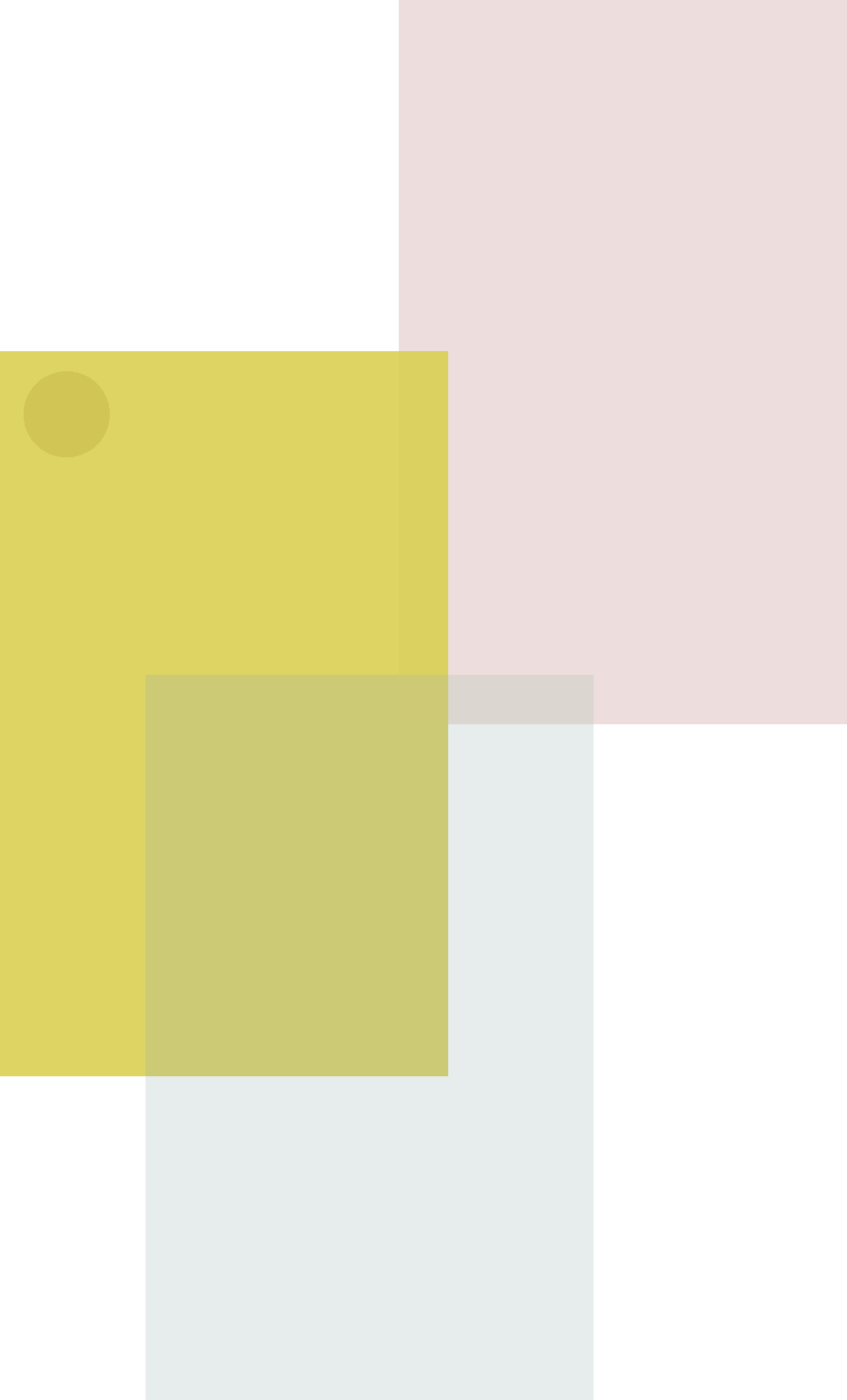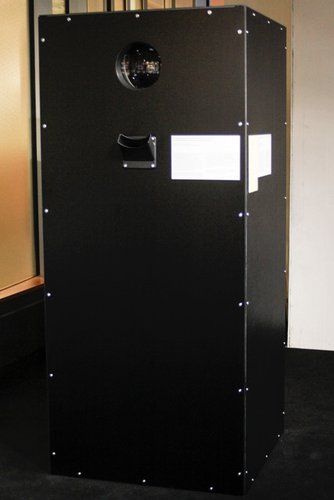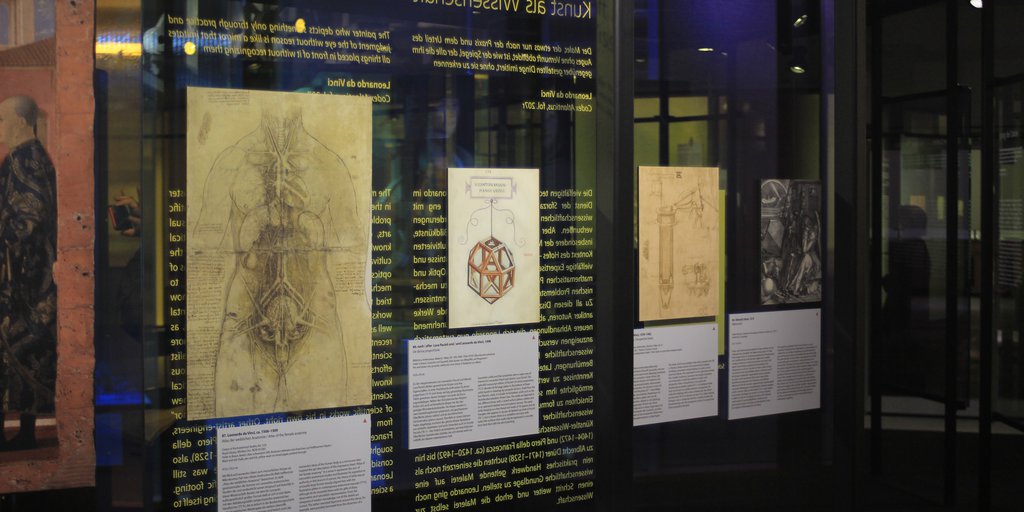
Science as Art, Art as Science <
The painter who depicts something only through practice and judgment of the eye without reason is like a mirror that imitates all things
placed in front of it without recognizing them
Leonardo da Vinci
Codex Atlanticus, fol. 207r. Translation: Elizabeth Hughes
The many and varied technical tasks Leonardo had to master in the service of the Sforzas were closely linked to scientific problems and challenges. But also the practice of the visual arts, especially painting, increasingly required theoretical knowledge and diverse expertise, particularly in the cultivated context of the court. This ranged from questions of optics and mathematical perspective construction to mechanical problems and medical knowledge. Leonardo now tried to learn systematically from the existing fundamental works by ancient authors related to all these disciplines, as well as from medieval sources and a growing number of more recent treatises. He expanded his library with specialist scientific literature and made concentrated and ambitious efforts to learn Latin and deepen his mathematical knowledge. This eventually enabled him to formulate new scientific insights of his own. He had now become an “author” of scientific works in his own right. Other artist-engineers, from Leon Battista Alberti (1404–1472) and Piero della Francesca (ca. 1420–1492) to Albrecht Dürer (1471–1528), also sought to place painting, which at the time was still considered a purely practical craft, on a scientific footing. Leonardo went one step further and elevated painting itself to a science.
Perspectives <
 | 81.
2006 |

The camera obscura (dark chamber) as we understand it today
is an optical device consisting of a light-proof box with a tiny aperture (pinhole) through which bundled light rays penetrate and meet on the interior back wall to project an inverted and reversed image. The principle was already known in antiquity. In the early modern age, it was continually refined by adding lenses and mirrors. Artists—especially landscape painters—used the camera obscura as a technical aid. Leonardo used the principle to explain how the human eye functioned.
The experimental historical camera obscura of the Max Planck Institute for the History of Science is not a copy of a specific historical model but a scientific device that can be configured to match every historical type and is easily adapted for experimental purposes.
References
Breidbach, Olaf, Kerrin Klinger, and Matthias Müller. 2013. Camera Obscura. Die Dunkelkammer in ihrer historischen Entwicklung. Stuttgart: Steiner.
Lefèvre, Wolfgang, ed. 2007. Inside the Camera Obscura. Optics and Art Under the Spell of the Projected Image. Workshop 20.–23.7.2006. Preprint 333. Berlin: Max Planck Institute for the History of Science.
Pablo Moya, Montserrat de. 2014. “La cámara oscura como prehistoria de la fotografía. Adenda I/II: Marco de referencia histórico, línea del tiempo. Adenda II/II: Base de datos de ilustraciones.” Diss., Cuenca: Universidad de Castilla-La Mancha.








